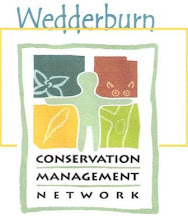

Areas where remnant box gum grassy woodlands / buloke woodlands are likely to occur.
WHITE BOX (Eucalyptus albens)
E. albens has an appropriate name, for it gives the impression of being a white tree, although when examined more closely, few of its features are really white. Perhaps the closest is the inflorescence, for the long buds with sharply conic opercula, and the stalks, are covered with a white, powdery wax. The twigs and leaves are also white to grey-green, and the closely adherent, finely fibrous bark is light grey-brown or very pale grey. Seen from a distance, the pale trunk and silver crown are very distinctive.
The rounded crown and large, rather broadly lanceolate leaves give an appearance of solidity to the tree, and the shade it casts is quite dense. This is a good shade and shelter tree in its native environment, which includes much of the wheatlands of New South Wales, along the western side of the Dividing Range, and in the upper Hunter River valley; to the south it extends into the northern part of Victoria and has a limited occurrence in South Australia.
White box occurs on fairly rich, well-drained soils of both igneous and sedimentary origin. It grows to over eighty feet in height, often with a bole about half the height of the tree. It is moderately resistant to frost and drought, and flowers from late summer sometimes into winter.

No comments:
Post a Comment